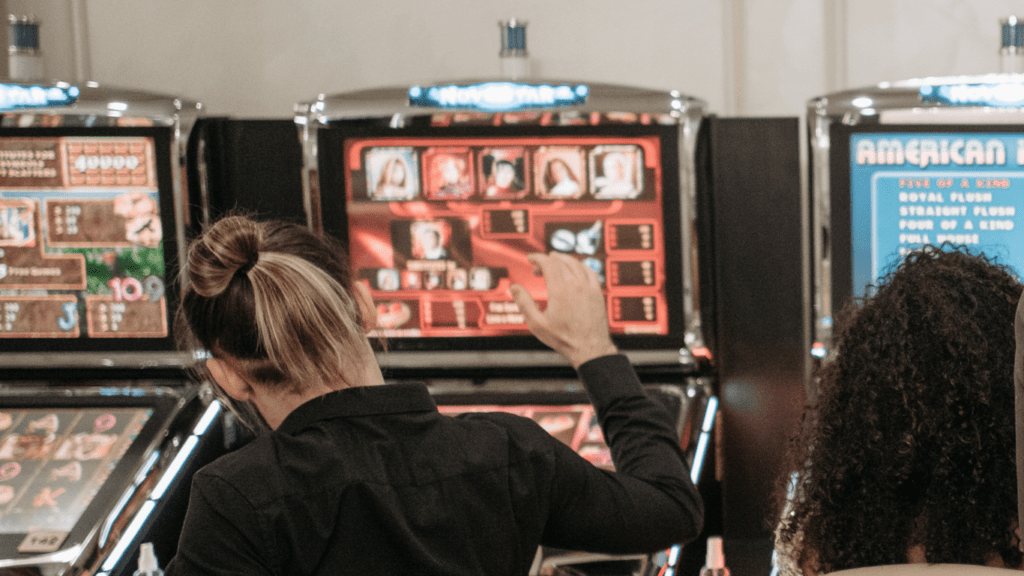Understanding the Importance of Setting Win Goals and Loss Limits
Being clear on win goals and loss limits significantly impacts one’s casino experience.
The Psychology Behind Win Goals
Win goals play a crucial role in maintaining control and achieving satisfaction. Setting a win goal allows me to define a clear endpoint for my casino visit.
This helps avoid the temptation to continue playing despite already winning, which often leads to giving back gains.
For example, if I set a win goal of $200, I’ll stop playing once I reach that amount. This ensures I walk away with a profit and increases overall enjoyment.
How Loss Limits Can Prevent Financial Disaster
Loss limits act as a safeguard for my bankroll. By setting a loss limit, I establish a maximum amount I’m willing to lose before stopping. This prevents losses from spiraling out of control.
For instance, if my loss limit is $100, I’ll stop playing if I reach that threshold. This saves my finances from deeper setbacks and avoids the emotional strain of chasing losses.
Establishing Your Goals Before the Casino Visit
It’s crucial to set win goals and loss limits before stepping into a casino. Preparing these goals ensures a controlled, enjoyable experience.
Assessing Your Financial Situation
First, examine your finances. Determine how much money you can afford to lose without impacting your daily life. Include all necessary expenses like:
- bills
- groceries
- savings
Dedicate only the disposable income to your casino bankroll. By knowing this amount, you can avoid financial stress and focus on having fun.
Realistic Goal Setting for Slot Machines and Table Games

Next, set realistic goals. For slot machines, consider a win goal that’s a percentage of your starting bankroll, such as 20-30%. For table games, set a loss limit and win goal based on the minimum and maximum bets of the game.
If your bankroll is $200, a win goal could be $60-$80, and a loss limit, $100. These guidelines help keep gameplay within manageable bounds and provide a clear endpoint for your casino visit.
Implementing Your Strategy at the Casino
Following a predefined strategy ensures that I can maintain control over my casino experience. This approach minimizes potential losses while maximizing the fun and excitement of gambling.
Monitoring Your Wins and Losses
- Using consistent tracking methods, I can keep a close eye on my wins and losses throughout my casino visit.
- Recording each session’s outcomes in a dedicated notebook or using a mobile app helps track my progress.
- Setting aside time after each game to log my performance ensures I stay within my predefined goals and limits.
This practice not only aids in sticking to my plan but also provides critical data for refining strategies in the future.
Adjusting Your Goals in Real-Time
If conditions change, I can adapt my goals and limits in real-time. While playing, I should remain flexible with my win and loss thresholds based on the casino’s environment and the games’ pace.
Should I hit a streak or encounter an unforeseen situation, reassessing and adjusting my targets protect my bankroll.
However, it’s essential to adhere to initial maximum loss limits to avoid significant financial setbacks and maintain a responsible gaming approach.
Case Studies and Success Stories
Examining real-life scenarios illustrates the benefits of setting win goals and loss limits for casino visits. Here are two focused examples showcasing effective strategies and lessons from failed ones.
Examples of Effective Goal Setting
One case involved a frequent casino visitor named Sarah. She set a clear win goal of 25% of her starting bankroll. By sticking to this target, Sarah managed her gambling sessions effectively.
On one visit, she started with $200 and aimed to walk away with $250. After reaching her goal in two hours, she left the casino satisfied, having made a $50 profit.
Another example features John, a table game enthusiast. He always set strict loss limits to protect his finances.
With a starting bankroll of $500, he decided to stop playing if he lost $150.
This limit prevented him from depleting his funds. In a month, John adhered to his strategy, and despite a few losses, he preserved his bankroll and enjoyed several winning nights.
Lessons From Failed Strategies
Tom’s experience highlights the consequences of not setting limits. He would visit casinos without predefined goals, often chasing wins.
On one occasion, Tom started with $300 but lost $600 by the night’s end, driven by the urge to recover his losses. This uncontrolled approach depleted his savings and caused unnecessary stress.
Lisa’s story underscores the importance of adhering to set goals. She set a win goal of 30% but ignored it after a lucky streak. Starting with $400, she reached her $120 target but continued playing.
Eventually, she left with only $100, turning potential profit into a loss. This taught her the value of discipline and stopping once goals are met.


